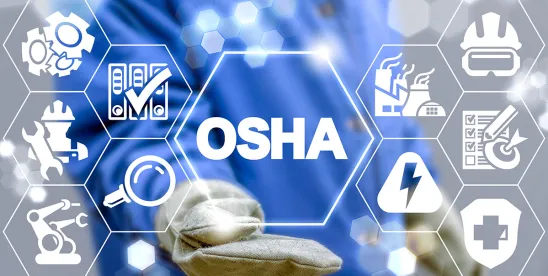On April 8, 2025, the Occupational Safety and Health Administration (OSHA) released Directive CPL 02-01-067, updating its Site-Specific Targeting (SST) inspection program. The revised directive outlines procedures for selecting and inspecting general industry establishments with twenty or more employees, based on employer-submitted injury and illness data from calendar years 2021 through 2023. Whereas the prior version of the program essentially targeted all employers and workplaces, this version is more narrowly tailored.
Quick Hits
- OSHA’s updated SST program targets general industry establishments (excluding construction) with twenty or more employees, using Form 300A data from 2021–2023.
- The program prioritizes inspections at establishments with high or upward-trending injury and illness rates, as well as those that failed to submit required data.
- The directive replaces the previous SST guidance (CPL 02-01-064, February 7, 2023) and will remain in effect for two years unless superseded.
Background
The SST program is OSHA’s primary programmed inspection initiative for non-construction workplaces. It leverages objective injury and illness data submitted under 29 C.F.R. § 1904.41 to focus enforcement resources on establishments with elevated rates of occupational injuries and illnesses. The program aims to ensure that employers maintain safe and healthful workplaces by directing inspections where they are most needed. From April 2023 to December 2024, the SST program resulted in 652 inspections, with a higher rate of violations and noncompliance compared to other non-construction programmed inspections, reinforcing the program’s effectiveness.
Key Changes in the 2025 SST Directive
Inspection selection is now based on 2023 Form 300A data for high-rate establishments, and 2021–2023 data for establishments with upward-trending rates. The low-rate and non-responder lists are also generated using 2023 data, updating from the previous use of 2021 data. The directive clarifies procedures for scheduling, prioritizing, and documenting inspections, and provides updated guidance on the use of the SST OSHA Tools Dashboard for managing inspection lists.
Inspection List Selection Criteria
OSHA will generate inspection lists for:
- High-rate establishments: Selected based on 2023 DART (Days Away, Restricted, or Transferred) rates, with separate thresholds for manufacturing and non-manufacturing sectors.
- Upward-trending establishments: Identified by rates at or above twice the private-sector national average in 2022, with continued annual increases from 2021–2023.
- Low-rate establishments: Randomly sampled to verify the accuracy of reported data.
- Non-responders: Randomly sampled from establishments that failed to submit required 2023 Form 300A data.
Scheduling and Inspection Procedures
Area offices (AOs) are responsible for maintaining and documenting inspection cycles, using the SST web-based application to generate and update inspection lists. Inspections are comprehensive in scope and may be expanded to include health hazards based on prior inspection history or industry classification. During inspections, compliance officers will review OSHA 300 logs, 300A summaries, and 301 incident reports for 2021–2023, and evaluate the adequacy of the employer’s safety and health management system. Establishments that received a comprehensive inspection within the past thirty-six months, are public-sector employers, or are participants in OSHA’s Voluntary Protection Programs (VPP) or Safety and Health Achievement Recognition Program (SHARP) are generally excluded from the inspection list. Small employers that are not required to submit their OSHA Form 300A electronically will not be subject to the program.
Deferrals and Deletions
SHARP and VPP participants are deferred or deleted from programmed inspection lists for specified periods. Establishments with ongoing OSHA On-Site Consultation visits may receive deferrals of up to ninety days. AOs must document all deletions and deferrals, including rationale and supporting information.
State Plan Impact
States with OSHA-approved state plans must adopt inspection targeting systems at least as effective as the federal SST program. States are required to notify OSHA of their intent to adopt identical or different policies within sixty days and implement any changes within six months.
Conclusion
The updated SST directive reflects OSHA’s ongoing commitment to data-driven enforcement and targeted inspections in general industry. Employers may want to ensure timely and accurate submission of injury and illness data and maintain robust safety and health management systems to mitigate the risk of inspection and potential citations.



 />i
/>i
